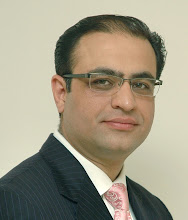Dear Friends,
This is the article published in "Graphiti" the Sunday magazine of The Telegraph newspaper on the 3rd of January giving my views on the year gone by and the road ahead !
It’s been a turbulent year for all asset classes including art but it’s thankfully drawing to a close on a better note than it started. However, it’s left behind some hefty damage — especially at the speculative end. What are the relevant lessons of the past year for Indian Contemporary Art — how can one build a portfolio that holds its value during rough weather?
We should note right away that the market for the modern artists — especially Gaitonde, Souza, Husain, Raza and a real gem whom we lost this year, Tyeb Mehta — remains strong but even among those art titans there are some pretty steep price variations. What this difficult year highlighted was the importance of quality and not just names. So if you’re lucky enough to possess a Souza work from the late ’50s to the early ’60s, the price for a 2ft by 3ft canvas now could be Rs 75 lakh, but if you have a Souza work from the late ’80s, within the same size range, the price could be just Rs 20 lakh.
A lot of artists, even those who had been bracketed in the top tier, suddenly found they weren’t selling at all when confidence troughed in March. One of the most flamboyant art galleries in the last four years, Bodhi Art Gallery, which had presences in Delhi, Mumbai, Singapore, New York and Berlin, finally closed down all its locations this year under the weight of mounting costs as their roster of artists slumped from the lofty valuations they’d enjoyed just a year earlier.
I feel the fall of Bodhi Art Gallery, which some rivals had regarded as too commercial, has not been a good thing for the world of Indian contemporary art. Bodhi was a leader in redefining some of the norms on presenting and displaying art, publishing arguably the best catalogues with each show and also taking Indian contemporary art to an international collector base.
It also had some of the best sites, welcoming and well-informed gallery staff and a really conducive environment for viewing art. But the scale and magnitude of the operation built on a group of artists who’d started to believe the hype was too much and finally led to the demise of what was, at one point of time, India’s most powerful contemporary art gallery. It was built on a model of investment and financial returns and though art is a financial asset anyone who looks at it merely through a commercial prism is bound to fail.
So what ultimately is the takeaway for collectors and galleries from these cautionary tales? In the good times, don’t get carried away by hype. It’s important to note that what keeps its value is quality — but only at the right price. Still even in these difficult times, a 1979 work by Jogen Choudhary was able to smash all records in the Sotheby’s auction to breach the Rs 2 crore mark due its incomparable quality.
Now, though, the situation is looking rosier for the art world. Art Tactic, an art research firm which tracks confidence in Indian contemporary art, has seen its confidence index recover to 46 from 19. This means that 46 per cent of the collector community surveyed will buy contemporary art at current valuations — perhaps not as good a figure as one would like but still a lot better than the 19 per cent registered earlier when times were tougher. Another pointer to improving sentiment is the recently concluded Saffron Art auction in which 62 per cent of its art works sold above the higher estimate — underscoring that the market is recovering its poise.
Looking ahead to the first quarter of 2010, one of the most interesting events is a show by cutting edge British collector Charles at his Art Gallery in London. The show, aptly titled “The Empire Strikes Back,” will put India — and Pakistan — in the global contemporary art spotlight once again, something which had happened with Arco Madrid last February where India was the focus country. But the timing of ’s exhibition is better in the context of the recovery in global markets than the Madrid show.
’s show, which opens on 29 January, promises to be really eye-catching. The roughly 26 artists featured include a mix of the top names in the Indian and Pakistan contemporary art space and also some new names you may not even have heard of. Some of the younger artists showing are Sakshi Gupta, T. Venkanna, Kriti Arora, Rajesh Ram and Rajan Krishnan among others. You may also want to take a peek at some of the research has put up for this show, which you can view at www.-gallery.co.uk.
Here at home keep an eye out locally for well-known photographer Rashid Rana’s show, curating at the Devi Art Foundation in Gurgaon starting January 16. This exhibit, focusing on the journey of Pakistani contemporary art, should be quite interesting, considering the passion of Anupam Poddar and the pioneering work he has done in the world of collecting Pakistani art.
Now in the meantime, let me wish you all a Happy New Year and a good time collecting in 2010.
Kapil Chopra is Senior Vice President of Oberoi Hotels & Resorts.He writes a blog on collecting and investing in Indian Contemporary Art at www.indianartinvest.blogspot.com.He also writes for The Telegraph newspaper in the Sunday magazine " Graphiti" every fortnight. In Delhi, he writes for "The Mail Today " newspaper and "First City" magazine.














No comments:
Post a Comment